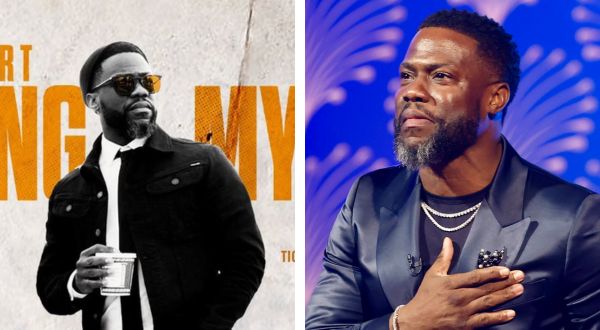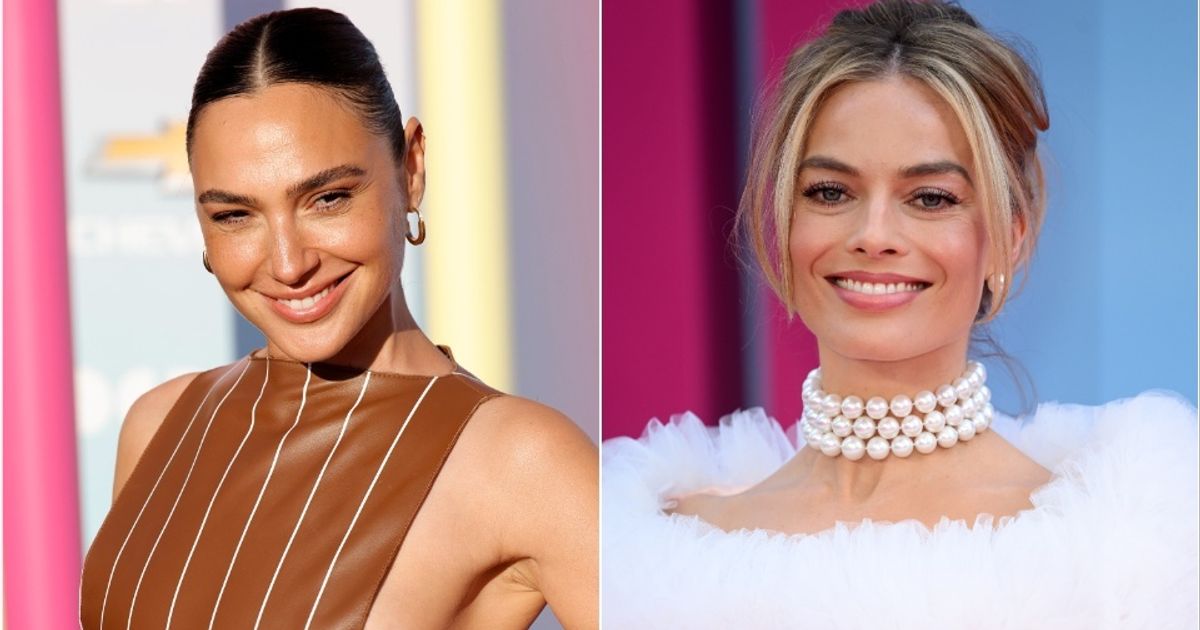Adapting comic books characters from the page to the screen isn’t always easy. When it comes to Marvel’s enormous cast of heroes and villains, certain portrayals in the Marvel Cinematic Universe (MCU) feel true to their original, comic book counterparts — like Robert Downey Jr.’s Tony Stark/Iron Man.
For some others though, there have been significant changes made to their live-action character, including wholly new origins, revamped personalities, and more. With that in mind, here are some MCU characters who are wildly different from their comic book versions.
Of course, spoilers for Marvel Cinematic Universe films ahead!
1) M.O.D.O.K.

PHOTO: Marvel Cinematic Universe
While the MCU’s M.O.D.O.K. certainly looks the part, the truth is that he’s a completely different character from the comic books. Short for Mental/Mobile/Mechanised Organism Designed Only for Killing, the comics-version of M.O.D.O.K. was born after experiments were made on A.I.M. (Advanced Idea Mechanics) technician George Tarleton, to increase his intelligence.
However, M.O.D.O.K.’s appearance in Ant-Man and the Wasp: Quantumania removes his ties to the A.I.M. organisation. Instead, the film completely reimagines his origin as a mutated, cybernetically-enhanced Darren Cross, the villain from the first Ant-Man movie who met his fate being shrunken to subatomic size by Scott Lang.
2) Taskmaster

PHOTO: Marvel Cinematic Universe
Taskmaster is another character in the MCU who’s drastically different from their comics counterpart. For one — the MCU Taskmaster, Antonia Dreykov, is genderswapped, making the character the daughter of the villainous General Dreykov.
In the comics, Taskmaster is Anthony Masters, a former S.H.I.E.L.D. agent who took an experimental Nazi super soldier serum that enhanced his latent “photographic reflexes,” allowing him to perfectly replicate the physical skills of anyone he’s seen in action. Unfortunately, these powers fractured his psyche and began erasing his memories, leading him to leave S.H.I.E.L.D. and become a swashbuckling mercenary, and would even become a teacher of his own criminal-training academy.
On the other hand, Antonia Dreykov’s abilities come from a chip implanted in her spine following a near-death experience. Sadly, being mind-controlled by the chip implant meant that Taskmaster was largely silent during her debut in Black Widow. With Taskmaster scheduled to make an appearance in Thunderbolts, here’s hoping there’s still a chance for their wisecracking nature from the comics to shine through.
3) Baron Zemo

PHOTO: Marvel Cinematic Universe
The MCU has portrayed Baron Zemo as an intelligence officer and family-man who had his life ruined by the Battle of Sokovia. He blamed his family’s demise on the Avengers, and also developed a hatred for Super Soldiers.
Meanwhile, the Zemo of the comics is a fascistic German baron who shares a hatred for Captain America. But he is evil to his core, instead of being spurred on by revenge. In fact, he comes from a long line of Baron Zemos, with his father being a Nazi scientist and the founder and original leader of the Masters of Evil (a supervillain team that includes other villains like Radioactive Man and Enchantress), as well as the Thunderbolts.
4) Drax

PHOTO: Marvel Cinematic Universe
Drax the Destroyer actually has a pretty wild backstory in the comics: He is the reincarnated soul of Arthur Douglas, an American saxophone-playing real estate agent. Arthur and his family were eliminated by Thanos when he first came to Earth (no witnesses allowed, you know the drill). In a bid to stop the Mad Titan, Thanos’ father created a superhuman body and imbued it with Arthur’s soul to serve as Thanos’ nemesis.
The MCU’s Drax is a far cry from his comics counterpart, whose reason for living is to pursue and destroy Thanos. Instead, he is presented as an actual alien whose family was slain by Ronan the Accuser, and frequently serves as comic relief. With Drax primed to exit the MCU in Guardians of The Galaxy Vol. 3, we’ll have to wait and see if he gets the dramatic farewell he deserves, and if a saxophone is involved.
5) Quicksilver

PHOTO: Marvel Cinematic Universe
In the comics, Pietro Maximoff (aka Quicksilver) is a mutant and child of Magneto (facts that later ended up being retconned), as opposed to a Hydra experiment. What’s more, Pietro is stated to be was twelve minutes older than his sister in the MCU, but in the comics, it’s Wanda who’s the older sibling.
6) Hawkeye

PHOTO: Marvel Cinematic Universe
Clint Barton’s Hawkeye may share the same skill-sets between the comics and screen, but his personality varies pretty significantly between the two. In the comics, Clint is a former villain and fumbling loverboy who’s had romantic encounters with a number of Marvel heroes, including Black Widow, Mockingbird, and Janet van Dyne. He’s also a huge blowhard who’s always ready to dish out a clever comeback and some sass.
In contrast, Clint in the MCU is a family man with three kids and dreams of settling down. What’s more, he’s not nearly as snarky as his comic book equal, although he still possesses a good amount of wry wit.
7) The Mandarin

PHOTO: Marvel Cinematic Universe
Will the real Mandarin please stand up? The mantle of the Mandarin has been assumed by three different characters in the MCU, and each claim seems possible. In Iron Man 3, the Mandarin is depicted as a terrorist persona portrayed by British character actor Trevor Slattery (played by Ben Kingsley). Later in the movie, this is shown to be a cover for Aldrich Killian’s (Guy Pearce) illegal activities involving the Extremis virus and Advanced Idea Mechanics.
Then, in Shang-Chi and the Legend of the Ten Rings, a “true” Mandarin is revealed as immortal Chinese warlord Xu Wenwu (Tony Leung). Wenwu is the father of Shang-Chi and Xialing, and rose to power through the strength of the Ten Rings.
In reality, the Mandarin of the comics has no ties to the British acting scene and A.I.M., nor is he the father of Shang-Chi (that distinction belongs to a separate villain, Fu Manchu). In addition, he is a descendant of Genghis Khan, a genius scientist and a skilled martial artist. The Ten Rings is still central to is character, but in the comics they are worn on his fingers instead of his arms.
8) Black Widow

PHOTO: Marvel Cinematic Universe
Despite having a different last name — “Romanoff” in the MCU, and “Romanova” in the comics — the Black Widow we got in the MCU actually shares a few similarities with her comics equivalent. She was a survivor of the Red Room, a facility where young orphans were brainwashed, and trained in espionage.
Where the two versions start to differ is that Black Widow in the comics actually does have superpowers. She was given a form of Super Soldier Serum that gave her enhanced agility, strength, durability and regeneration, allowing her to operate as a spy for several decades.
Additionally, she’s had a number of romantic dalliances in the comics, including Hawkeye, Iron Man, Daredevil, and most notably the Winter Soldier. At one point, she was even married to fellow Russian operative Alexei Shostakov, who would go on to become Red Guardian. Yeah, the same guy who’s her spy-father in the MCU.
9) Namor

PHOTO: Marvel Cinematic Universe
The MCU’s Namor trades the Atlantis of the comics for Talocan, inspired from Aztec mythology. This is reinforced through Namor’s Aztec-inspired accessories in Black Panther: Wakanda Forever, and even the genesis of his name — taken from the words of Spanish colonisers, “El Niño sin Amor” (or “child without love”).
The origins behind their mutant powers also differ considerably. In the comics, Namor was born from a human American sea captain and Princess Fen, the Atlantean daughter of Emperor Thakorr. In Wakanda Forever, we learn that the MCU’s Namor received his powers after his mother ingested a special underwater herb while he was still in the womb.
10) Vulture

PHOTO: Marvel Cinematic Universe
The Vulture of the comics is a kooky old man with a penchant for electronics, chemistry and invention, who flies around New York burglarising homes in a feathered costume. The MCU improved on this concept by turning him into a salvager-turned-arms-trafficker (giving new meaning to his moniker) after his company is forced out of business.
Along with this change, he received a modern-looking mechanical suit cobbled together from Chitauri technology. In a surprise twist in Spider-Man: Homecoming, he was also revealed to be the father of Liz Allan (Peter Parker’s love interest in the film), a connection not found in the comics.
11) Nebula

PHOTO: Marvel Cinematic Universe
The MCU positions Nebula as the adopted daughter of Thanos. In the comics world, however, Nebula is allegedly the granddaughter of Thanos, a claim that the Mad Titan himself doubts. Moreover, he would burn her alive as punishment, as opposed to the MCU’s backstory of Thanos replacing her body parts with robotic enhancements every time she lost a battle with Gamora. Nebula also doesn’t have as strong ties to the Guardians of the Galaxy in the comics as she does in the films.
12) Abomination

PHOTO: Marvel Cinematic Universe
While the MCU presented Emil Blonsky as a British Royal Marine who incidentally becomes the Abomination, the character has a more villainous turn in the comics, being a KGB Operative and spy for the Soviet Union. Furthermore, he gains his powers in the comics by deliberately exposing himself to the same gamma radiation that transformed Bruce Banner into the Hulk, instead of a combination of Super Soldier Serum and Bruce Banner’s blood in the MCU.
13) Hulk

PHOTO: Marvel Cinematic Universe
Speaking of Bruce Banner, a common complaint about the MCU is how it has nerfed the Hulk. We saw the indestructible green giant get easily manhandled by Thanos in Avengers: Infinity War. When Banner fuses with the Hulk in Avengers: Endgame, we end up losing the rage monster, along with Banner’s dark struggle with his other half, which is an ongoing plotline in the comics.
14) Wong

PHOTO: Marvel Cinematic Universe
In the comics, Wong is a Chinese manservant to Doctor Strange who knows martial arts. He is often serious, with little depth to his character. In order to avoid this racial stereotype, the MCU updated the character by making him a peer to Doctor Strange, more recently even taking up the title of Sorcerer Supreme. He also carries a better sense of humour about him in the MCU — cracking wise, listening to Beyoncé, and even watching The Sopranos while worrying about spoilers.
15) Star-Lord

PHOTO: Marvel Cinematic Universe
Peter Quill / Star-Lord saw some pretty notable changes to his history in the MCU. For starters, his mother dies of cancer in Guardians of the Galaxy, while she was killed by aliens in the comics. What’s more, Peter was made half Celestial in the movies through his father Ego, but his father in the comics is actually J’son, heir to the throne of the planet Spartax.
The kicker? Yondu never abducted Peter as a child in the comics. Rather, he was an adult and a NASA trainee before leaving Earth on a stolen Kree ship. So, if the movies had adapted the comics directly, we never would have gotten that great Mary Poppins reference in Guardians of the Galaxy Vol. 2.
Bonus: Hawkeye

PHOTO: Marvel Cinematic Universe
Like the elder Hawkeye, Kate Bishop also sees some differences between her screen and comic book counterparts. In the Disney+ series, we see Kate as a bright-eyed fan of Hawkeye’s heroics during the Battle for New York. However, her reason for fighting crime in the comics actually stems from being attacked in Central Park one day, and then learning to fight and defend herself to deal with the experience.
Kate also tends to have a more level head and dry humour, in comparison to her bubbly, sassy and often overconfident MCU portrayal. One might even draw the conclusion that Clint and Kate had their personalities swapped in the Hawkeye series.
source: asiaone.com







